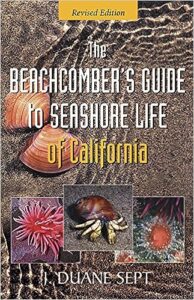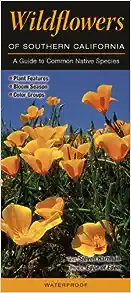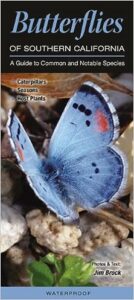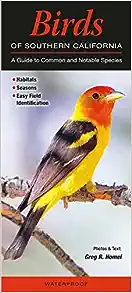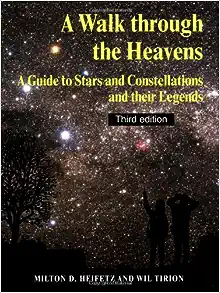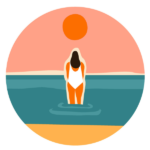
SoCalCM Nature
With beautiful weather and nature all around us, there’s no reason not to get outside in Southern California. This page lists local areas, field trip opportunities and resources.
AmblesideOnline’s “What is Nature Study” Page
Be aware
Poison Oak, Rattlesnakes, Ticks, and Mountain Lions are part of our local environment. There’s no need to be fearful, simply educate yourself and your children so you can be aware and enjoy the outdoors.
Information on this page may be outdated so always contact the location prior to planning a visit. To report an error on this page or if you have a resource you’d like to see added email admin@charlottemasoneducation.org.
Shakespeare by the Sea – timeless tales, ticketless admission all summer long. Free Shakespeare plays at outdoor park locations throughout Orange County and Los Angeles up to Palos Verdes. Donate if you love what they do to keep it going!
Tessman Planetarium – These guys love astronomy and love sharing it with the kids! They’ll stay and talk for hours and answer all the kids’ questions. Perfect sized planetarium for a small group. $6 – $7 per person admission.
Natural History Museum Homeschool Days – this is in LA, but well worth the trip. Hundreds of dinosaur bones, taxonomy, geology and gems galore and an interesting nature lab.
Autry Museum of the American West
Pacific Symphony at Segerstrom Hall Student Tickets – Join Student Rewards, Pacific Symphony’s e-club for students, where they can get tickets for individual concerts for just $10 and non-student friends and family can get tickets for only $20. A great way to attend the symphony with your kids affordably. They also have Community Concerts which are free events in Mission Viejo and Irvine.
Segerstrom On Stage at the Center. Discounted student tickets for local shows.
Griffith Observatory – this is in LA, but well worth the trip. Planetarium, theatre, Zeiss telescope, pendulum, and more, all in an architecturally beautiful building with an amazing view of LA.
Astronomy Night at Caspers Wilderness Park – Free, $5 parking. Held only on evenings with clear skies. Usually on Saturdays closest to the New Moon. Call park at (949) 923-2210 for weather-sky updates or additional information.Come for a grand tour of the universe! Join Allan White and other amateur astronomers and have a look in the telescopes to see Venus, Mars and Jupiter. Take a guided tour of the constellations and learn the myths and facts about the cosmos. Observe the wonders of the night sky including nebulas, galaxies, star clusters and double stars.
The Getty – Jean Paul Getty’s gift to the world, an unbelievable collection of art including paintings, manuscripts, sculptures, a garden. It begins on a tram ride up the hill to architecturally beautiful buildings housing the collections. Free admission, $10 parking. Also the Getty Villa
Riley’s Farm Living History in Oak Glen, CA – schedule any of their living history field trips, go apple picking, or just visit their store where they sell bonnets and civil war paraphernalia. Oak Glen Preserve is just down the road with a great hike. Snowline is also down the street with hot donuts for sale.
Orange County Museum of Art – free admission if scheduled 2 weeks in advance. Fridays are free admission.
Prehistoric Pets – Fountain Valley, CA. All kinds of interesting reptiles.
Laguna Niguel Botanical Preserve
The Huntington Library and Gardens
Inland Pacific Ballet Educational Outreach
Long Beach Aquarium Homeschool Days
Sea & Sage Audubon Society @ San Joaquin
“The Bay” Alamitos bay in Long Beach
Tall Ship Festival – Dana Point (possibly closed while under construction)
Field Guides and additional Resources
All Trails – local trail information and user updates. Click “Explore Nearby Trails”
Southern California Herpes – snakes, lizards, turtles, frogs and toads, salamanders.
Tides.net – a great resource for checking tides a month at a time.
Surfline – Check the surf before heading to the beach. Learn about rip currents. Check lifeguard stations at the beach – red flag means dangerous rip currents. Checkered flag marks the surf/swim only areas.
These are lightweight waterproof guides that can be handled by littles or carried along on a hike.
Charlotte Mason Nature Resources
Ambleside Online’s Nature Study Page
Sections from the series discussing nature:
Out of Door Life for the Children
Some Instructors of Conscience: Nature, Science, Art
Quotes by Charlotte Mason and others that help give us an idea of her thoughts on nature study:
Miss Mason loved to see what “finds” the students brought back from their expeditions and to hear what birds they had seen or to tell what she had seen.
I remember how she talked about the cock-redstart at table and made us eager to notice the patch of intensely white feathers on his head contrasting with his black throat.
Out of doors the students learn to look and to watch they they may know creatures and plants by sight as they know friends; to recognise the birds by their song, flight, feathers and nesting places, and their time of arrival and departure; to observe the flowering seasons of all trees and herbs and the ripening of common spore-bearing plants such as horsetails and large liverworts; to note the reappearance of butterflies and dragonflies, stone,–caddi,–and mayflies, and to know some of their eggs and larvæ.
Each one records in her own Nature Note Book that which has interested her, and takes home something to paint. The effort of attention during the time given to painting the twig, flower or fruit, chrysalis, shell or egg, fixes its form and colour in the memory. This is the way to get to know “its position as it grows, its trick of holding its head, the grace of its profile” (as Ruskin says of a flower in words quoted in the Parents’ Review for February, 1923). The Nature Note Book becomes increasingly valuable when the records of one year and one locality can be compared with another; and a student generally feels that she is making more progress in her second year though she was unconsciously storing up first impressions in the early days of her training.
There is a delightfully casual element in Nature Walks. We simply choose which way to go and then “Nature” does the rest because Ambleside is an unrivalled spot to learn in. We like to be teased when the Nature Walk lingers to watch a dipper or a grey wagtail, or the Bird Walk finds the yellow Gagea or the marsh Cinquefoil, as if we were poaching on each other’s preserves! For the fact is that we take whatever comes, and the unexpected almost always happens.
The Rev. Alfred Thornley, who examines the “Seniors”‘ Nature Note Books, testifies to the freshness and pleasure which this mode of Nature Study secures, and this spontaneous enjoyment was provided by Miss Mason when she taught us to gather the materials for science by studying Nature out of doors for ourselves and adding to our knowledge year after year. ~from In Memoriam (a tribute to CM after her death)
Of the teaching of Natural Philosophy, I will only remind the reader of what was said in an earlier chapter––that there is no part of a child’s education more important than that he should lay, by his own observation, a wide basis of facts towards scientific knowledge in the future. He must live hours daily in the open air, and, as far as possible, in the country; must look and touch and listen; must be quick to note, consciously, every peculiarity of habit or structure, in beast, bird, or insect; the manner of growth and fructification of every plant. He must be accustomed to ask why––Why does the wind blow? Why does the river flow? Why is a leaf-bud sticky? And do not hurry to answer his questions for him; let him think his difficulties out so far as his small experience will carry him. Above all, when you come to the rescue, let it not be in the ‘cut and dried’ formula of some miserable little text-book; let him have all the insight available and you will find that on many scientific questions the child may be brought at once to the level of modern thought. Do not embarrass him with too much scientific nomenclature. If he discover for himself (helped, perhaps, by a leading question or two), by comparing an oyster and his cat, that some animals have backbones and some have not, it is less important that he should learn the terms vertebrate and invertebrate than that he should class the animals he meets with according to this difference.~Vol. 1, p.264-265
In Science, or rather, nature study, we attach great importance to recognition, believing that the power to recognise and name a plant or stone or constellation involves classification and includes a good deal of knowledge. To know a plant by its gesture and habitat, its time and its way of flowering and fruiting; a bird by its flight and song and its times of coming and going; to know when, year after year, you may come upon the redstart and the pied fly-catcher, means a good deal of interested observation, and of, at any rate, the material for science.
The children keep a dated record of what they see in their nature note-books, which are left to their own management and are not corrected. These note-books are a source of pride and joy, and are freely illustrated by drawings (brushwork) of twig, flower, insect, etc. The knowledge necessary for these records is not given in the way of teaching. On one afternoon in the week, the children (of the Practising School) go for a ‘nature walk’ with their teachers. They notice for themselves, and the teacher gives a name or other information as it is asked for, and it is surprising what a range of knowledge a child of nine or ten acquires.
The teachers are careful not to make these nature walks an opportunity for scientific instruction, as we wish the children’s attention to be given to observation with very little direction. In this way they lay up that store of ‘common information’ which Huxley considered should precede science teaching; and, what is much more important, they learn to know and delight in natural objects as in the familiar faces of friends. (Vol 3 pg 237)
As soon as a child is old enough, he should keep his own nature notebook for his enjoyment. Every day’s walk will give something interesting to add – three squirrels playing in a tree, a bluejay flying across a field, a caterpillar crawling up a bush, a snail eating a cabbage leaf, a spider suddenly dropping from a thread to the ground, where he found ivy and how it was growing and what plants were growing with it, and how ivy manages to climb. (Vol 1 p 55)
This is what we wish to do for children in teaching them to draw – to cause the eye to rest, not unconsciously, but consciously, on some object of beauty which will leave in their minds an image of delight for all their lives to come. (Vol 1 p 313)
The first buttercup in a child’s nature notebook is shockingly crude, the sort of thing to scandalise a teacher of brush-drawing, but by and by another buttercup will appear with the delicate poise, uplift and radiance of the growing flower. (Vol 6, p 217)
The only sound method of teaching science is to afford a due combination of field or laboratory work, with such literary comments and amplifications as the subject affords. For example, from Ethics Of the Dust children derive a certain enthusiasm for crystals as such that their own unaided observation would be slow to afford. As a matter of fact the teaching of science in our schools has lost much of its educative value through a fatal and quite unnecessary divorce between science and the ‘humanities.’ (Vol. 6 pg. 223)
In this matter of instruction in the things of Nature, we owe yet more to ourselves: for,
“Nature never did betray the heart that loved her”;––
and, in return for our discriminating and loving observation, she gives us the joy of a beautiful and delightful intimacy, a thrill of pleasure in the greeting of every old friend in field or hedgerow or starry sky, of delightful excitement in making a new acquaintance.
But Nature does more than this for us. She gives us certain dispositions of mind which we can get from no other source, and it is through these right dispositions that we get life into focus, as it were; learn to distinguish between small matters and great, to see that we ourselves are not of very great importance, that the world is wide, that things are sweet, that people are sweet, too; that, indeed, we are compassed about by an atmosphere of sweetness, airs of heaven coming from our God. Of all this we become aware in “the silence and the calm of mute, insensate things.” Our hearts are inclined to love and worship; and we become prepared by the quiet schooling of Nature to walk softly and do our duty towards man and towards God. (Vol.4, Book II, p98)
As sweet a teacher was that ‘small moss’ of whose ministration to him Mungo Park tells us––”I saw myself in the midst of a vast wilderness, in the depth of the rainy season––naked and alone, surrounded by savage animals, and men still more savage. I was five hundred miles from the nearest European settlement. All these circumstances crowded at once on my recollection, and I confess that my spirits began to fail me . . . At this moment, painful as my reflections were, the extraordinary beauty of a small moss in fructification irresistibly caught my eye. I mention this to show from what trifling circumstances the mind will sometimes derive consolation; for though the whole plant was not larger than the top of one of my fingers, I could not contemplate the delicate conformation of its roots, leaves, and capsula without admiration. Can that Being, thought I, who planted, watered, and brought to perfection, in this obscure part of the world, a thing which appears of so small importance, look with unconcern upon the situation and sufferings of creatures formed after His own image? Surely not! Reflections like these would not allow me to despair. I started up and, disregarding both hunger and fatigue, travelled forwards, assured that relief was at hand; and I was not disappointed.” (Vol. 4, Book II, p 99)
Scientific training is not the same thing as information about certain scientific subjects. No one in these days can escape random information about radium, wireless telegraphy, heredity, and much else; but windfalls of this sort do not train the mind in exact observation, impartial record, great and humble expectation, patience, reverence, and humility, the sense that any minute natural object enfolds immense secrets––laws after which we are still only feeling our way. (Vol.4, Book II, p.101)
We find an American publication called “The Sciences” (whose author would seem to be an able man of literary power) of very great value in linking universal principles with common incidents of everyday life in such a way that interest never palls and any child may learn on what principles an electric bell works, what sound means, how a steam engine works, and many other matters, explained here with great lucidity. Capital diagrams and descriptions make experiments easy and children arrive at their first notions of science without the verbiage that darkens counsel. Form IIA [5th & 6th] read “Life and Her Children” by Arabella Buckley and get a surprising knowledge of the earlier and lower forms of life. IIB [4th] take pleasure in Kingsley’s Madam How and Lady Why. They are expected to do a great deal of out-of-door work in which they are assisted by “The Changing Year“, admirable month by month studies of what is to be seen out-of-doors. They keep records and drawings in a Nature Note Book and make special studies of their own for the particular season with drawings and notes.
The studies of Form III [7th & 8th] for one term enable children to––”Make a rough sketch of a section of ditch or hedge or sea-shore and put in the names of the plants you would expect to find.” “Write notes with drawings of the special study you have made this term,” “What do you understand by calyx, corolla, stamen, pistil? In what ways are flowers fertilised?” “How would you find the Pole Star? Mention six other stars and say in what constellations they occur.” “How would you distinguish between Early, Decorated and Perpendicular Gothic? Give drawings.” Questions like these, it will be seen, cover a good deal of field work, and the study of some half dozen carefully selected books on natural history, botany, architecture and astronomy, the principle being that children shall observe and chronicle, but shall not depend upon their own unassisted observation. (Vol. 6 Pg. 220)
And for those of you who aren’t sure if Nature Study matters for science in the early years for your children, here’s a great quote from the book Lay of the Land:
I have a biological friend, a professor of zoology, who never saw a woodchuck in the flesh. He would not know a woodchuck with the fur on from a mongoose. Not until he had skinned it and set up the skeleton could he pronounce it Arcto^nys monax with certainty. Yes, he could tell by the teeth. Dentition is a great thing. He could tell a white pine (strobus) from a pitch pine {rigida) by just a cone and a bundle of needles, — one has five, the other three, to the bundle. But he wouldn’t recognize a columned aisle of the one from a Jersey barren of the other. That is not the worst of it : he would not see even the aisle or the barren, — only trees.
As we jogged along recently, on a soft midwinter day that followed a day of freezing, my little three- year-old threw his nose into the air and cried : ” Oh, fader, I smell de pitch pines, de scraggly pines, — ‘ou calls ’em Joisey pines ! ” And sure enough, around a double curve in the road we came upon a single clump of the scraggly pitch pines. Our drive had taken us through miles of the common white species.
Did you ever smell the pitch pines when they are thawing out ? It is quite as healthful, if not as sci-entific, to recognize them by their resinous breath as by their needles per bundle.
I want this small boy some time to know the difference between these needle bundles. But I want him to learn now, and to remember always, that the hard days are sure to soften, and that then there oozes from the scraggly pitch pines a balm, a piny, penetrating, purifying balm, —a tonic to the lungs, a healing to the soul.
All foolishness.? sentiment.? moonshine.? — this love for woods and fields, this need I have for com-panionship with birds and trees, this longing for the feel of grass and the smell of earth ? When I told my biological friend that these longings were real and vital, as vital as the highest problems of the stars and the deepest questions of life, he pitied me, but made no reply.
He sees clearly a difference between live and dead men, a difference between the pleasure he gets from the society of his friends, and the knowledge, interesting as it may be, which he obtains in a dissecting room. But he sees no such difference between live and dead nature, nature in the fields and in the lab-oratory. Nature is all a biological problem to him, not a quick thing, — a shape, a million shapes, informed with spirit, — a voice of gladness, a mild and healing sympathy, a companionable soul.
” But there you go ! ” he exclaims, ”talking poetry again. Why don’t you deal with facts } What do you mean by nature-study, love for the out-of-doors, anyway ! “
I do not mean a sixteen weeks’ course in zoology, or botany, or in Wordsworth. I mean, rather, a gentle life course in getting acquainted with the toads and stars that sing together, for most of us, just within and above our own dooryards. It is a long life course in the deep and beautiful things of living nature, — the nature we know so well as a corpse. It is of necessity a somewhat unsystematized, incidental, vacation-time course, — the more’s the pity. The results do not often come as scientific discoveries. They are personal, rather; more after the manner of revelations, — data that the professors have little faith in. For the scientist cannot put an April dawn into a bottle, cannot cabin a Hockomock marsh, nor cage a December storm in a laboratory. And when, in such a place, did a scientist ever overturn a ” wee bit heap o’ weeds an’ stibble ” ? Yet it is out of dawns and marshes and storms that the revelations come ; yes, and out of mice nests, too, if you love all the out-of-doors, and chance to be ploughing late in the fall.
But there is the trouble with my professor. He never ploughs at all. How can he understand and believe?
Here is the poem by Robert Burns “To a Mouse” that is referenced in the sentence “wee bit heap o’ weeds an’ stibble”
Sample Nature Notebooks from Charlotte Mason Students
Nature Notebooks from the Charlotte Mason Digital Collection.
A Lesson in Drybrush Watercolor Technique
A NATURE STUDY LESSON
The Drybrush Watercolor Technique by Melissa Duffy (shared with permission by Jeanette Tulis. It was graciously shared with her by Melissa Duffy, the art teacher at Perimeter School in Atlanta, a Childlight CM school, who gave her permission to share it freely.)
Nature Study Posts from LivingCMinCA:
The Delightfully Casual Element of Nature Study – In Memoriam
